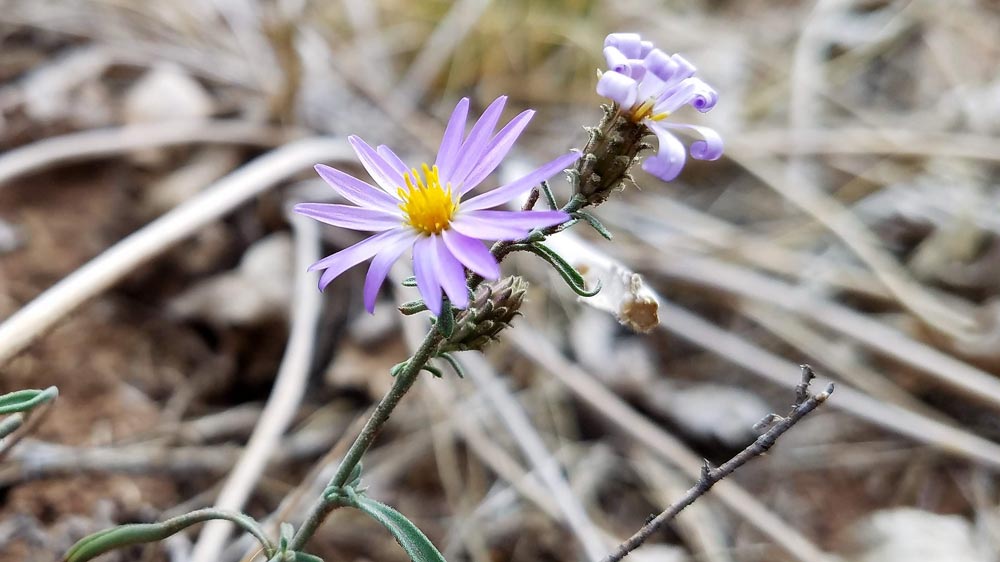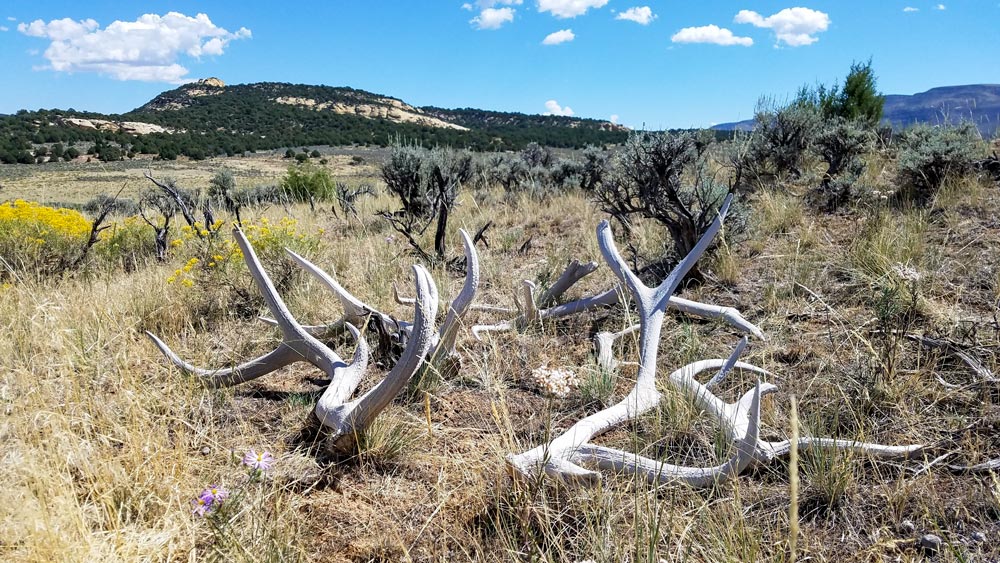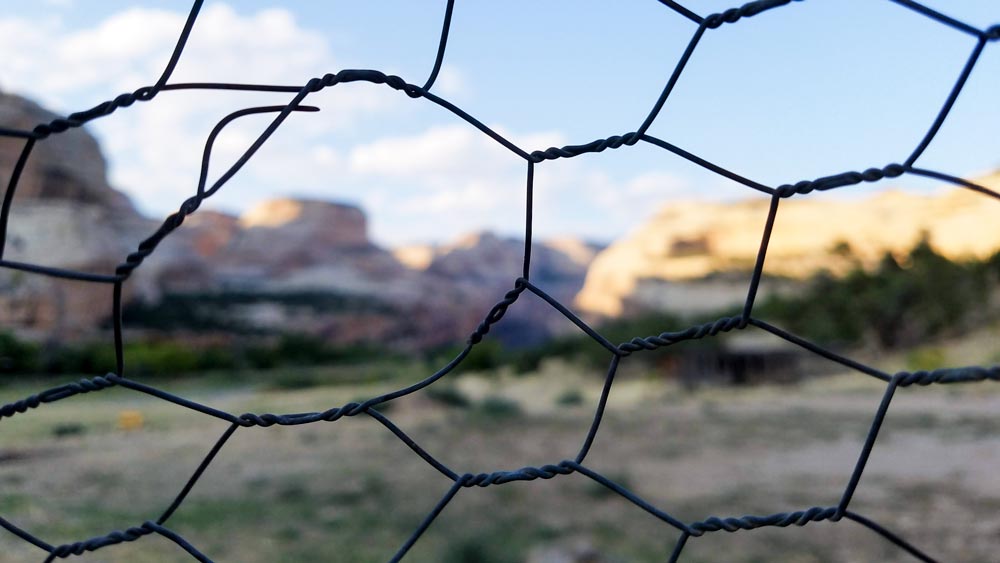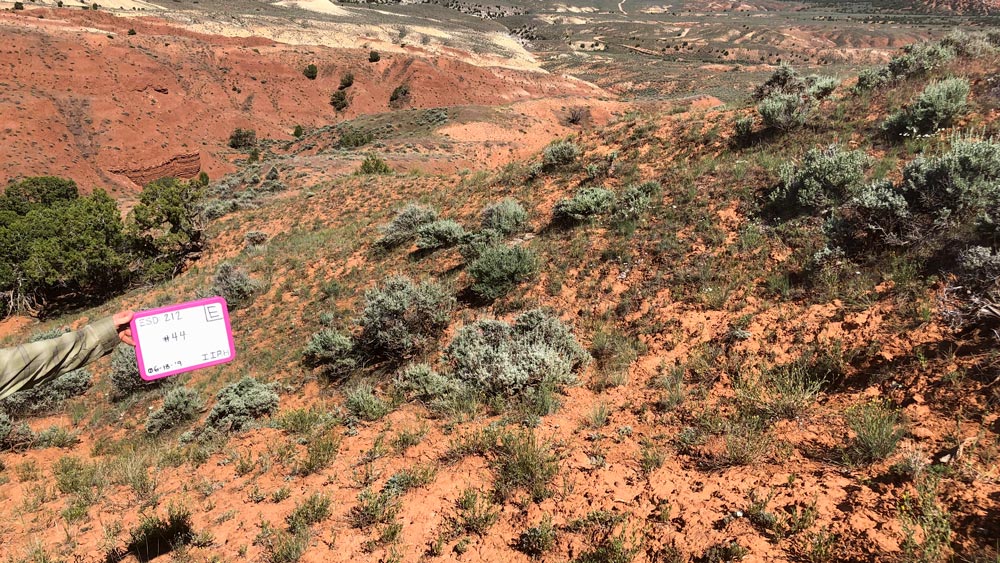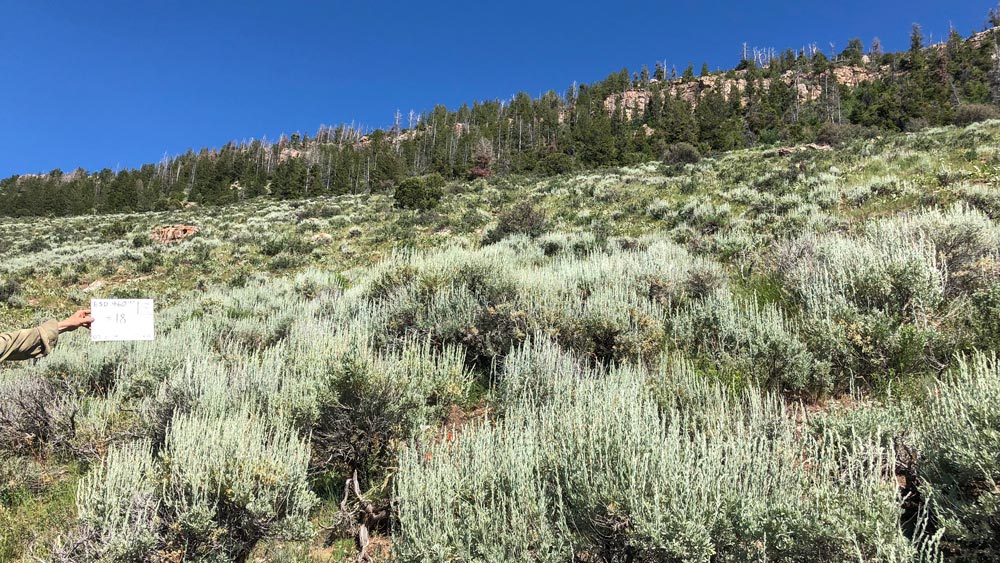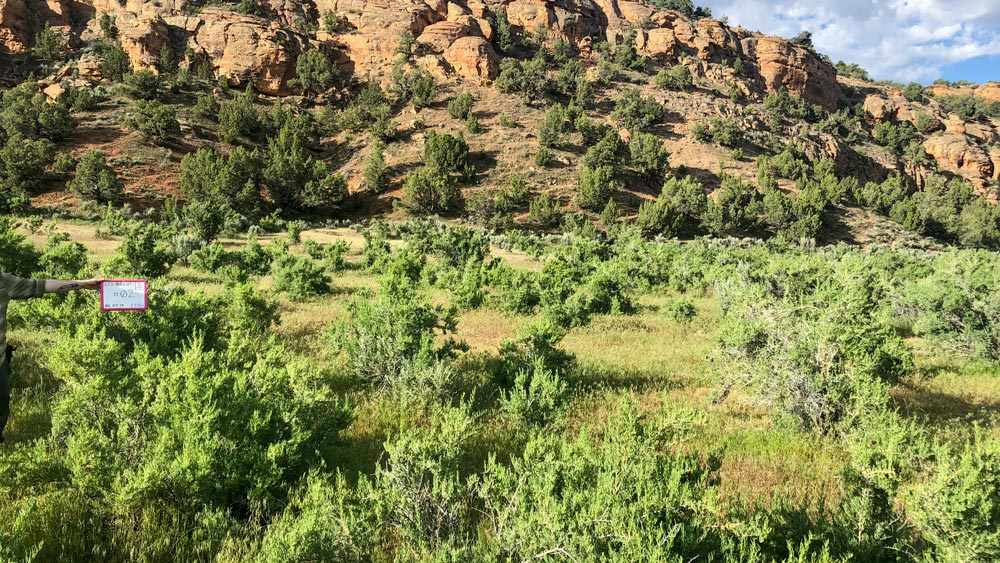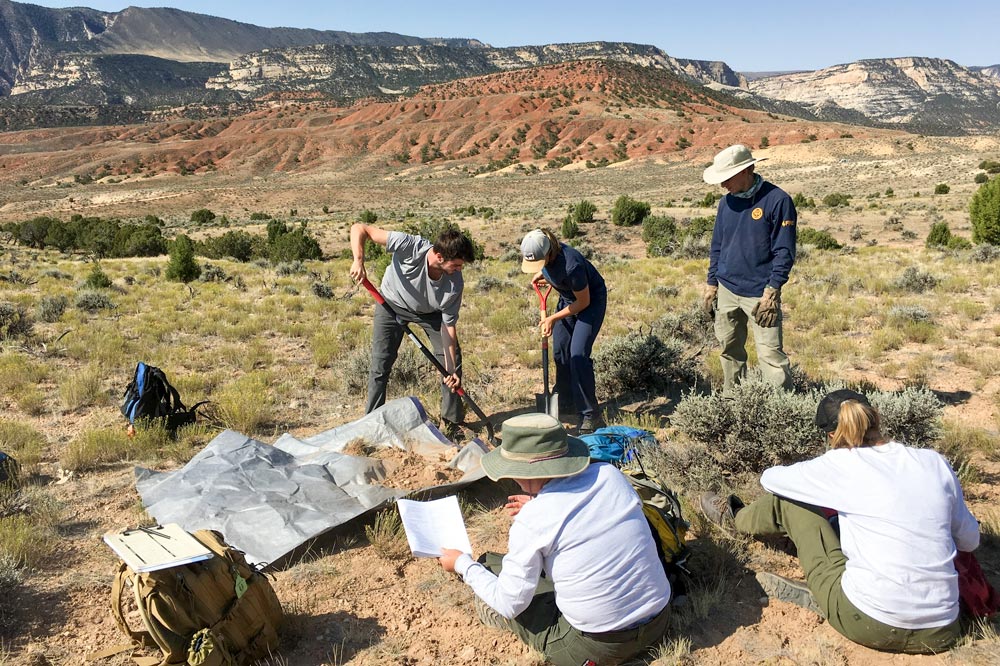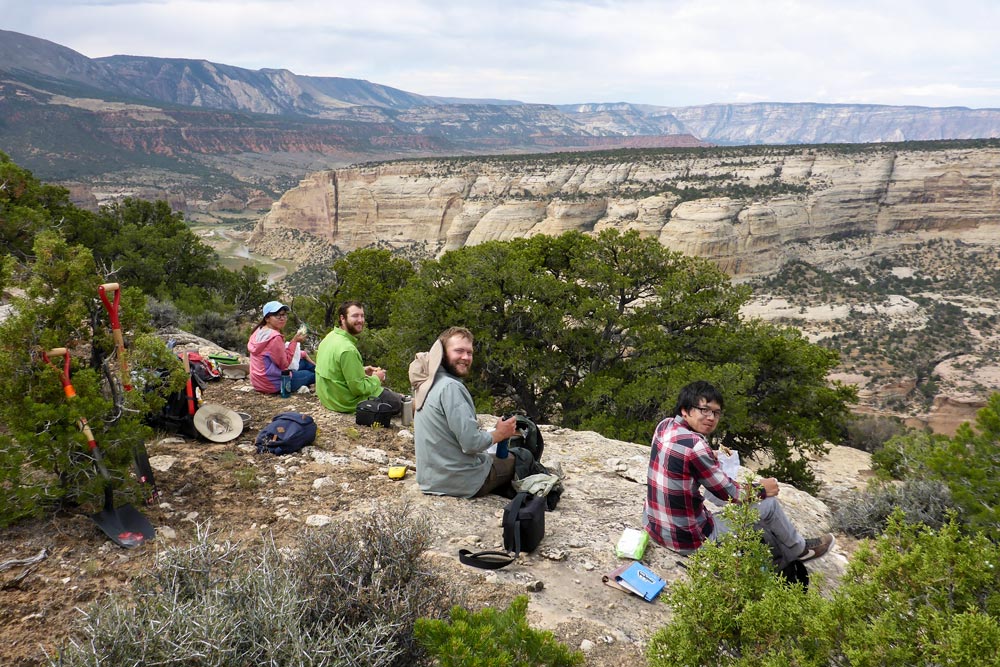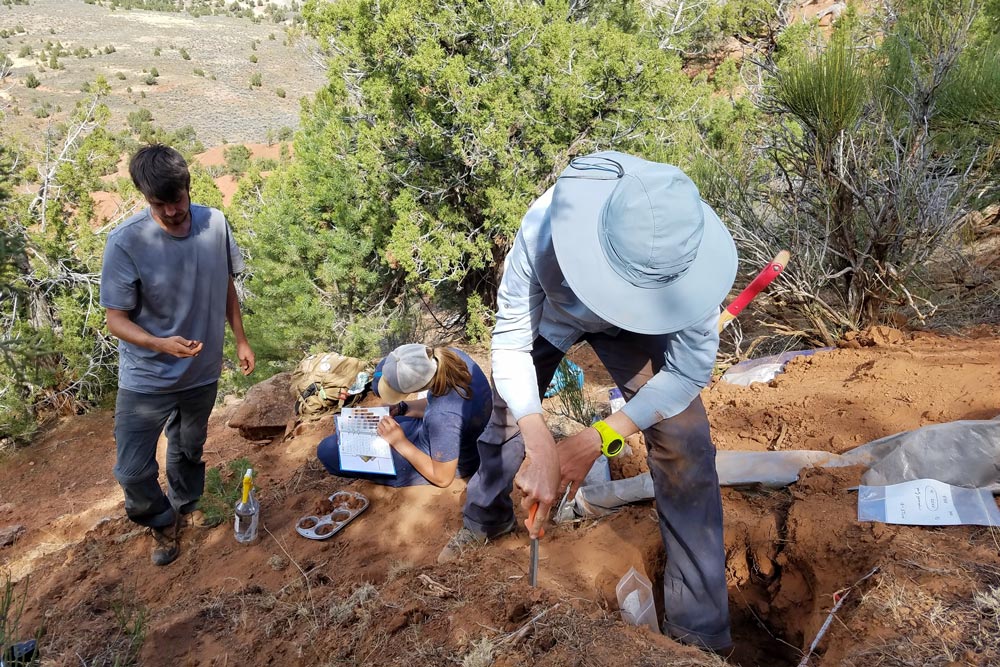Dinosaur National Monument unites CSU’s ‘range’ of expertise
By Karina Puikkonen
Photo credit: Ryan Schroeder
In addition to its wealth of namesake fossils, Dinosaur National Monument also contains more than 200,000 acres of rangeland ecosystems that surround canyons carved by the Yampa and Green Rivers. Successful stewardship of the park’s entire ecosystem – fossils, rangelands and more – is less complicated because of a partnership between the National Park Service and Colorado State University.
“Assessing ecological health across entire ecosystems is really complex, almost beyond human understanding,” said CSU forest and rangeland scientist Kevin Jablonski. “We need to integrate a lot of different knowledge, scientific expertise and perspectives.”
The NPS/CSU partnership involves a team of CSU alumni, faculty, researchers and students. Over the past few years, the university’s collective expertise in applied management, rangeland assessment and soil science has evaluated Dinosaur National Monument’s rangeland health to create a snapshot of current land conditions. This will help NPS staff consider future management of grazing allotments within the monument and provide a model assessment for future National Park units.
An alumni connection
This project began at CSU several years ago when NPS ecologist Jordan Spaak was completing his master’s degree in rangeland ecosystem science in the Warner College of Natural Resources. Today, Spaak travels across the country working on both ecological and scientific endeavors for the protected lands of the National Park System.
This mobile position eventually took him to Dinosaur National Monument, where he connected with Emily Spencer, a graduate of CSU’s master of natural resource stewardship program and the monument’s natural resource specialist. They jointly identified a need to understand rangeland health within the monument, and the partnership was born.
“We knew we needed a diverse skillset and knowledge base in order to understand all facets of rangeland ecosystems and mesh different aspects of these disciplines,” Spaak said. “We had a lot of conversations about who might be the most viable institutional partner, and CSU came up repeatedly.”
Spencer had been working at the monument for several years and said she saw how her own education prepared her to oversee this project.
“I took range classes, grass identification, and rangeland monitoring classes within my ecological restoration focus, and these classes were the best help in understanding different metrics and monitoring techniques for rangelands,” Spencer said. “Who knew I would be in charge of a National Park Service range program years later?”
Spaak and Spencer recruited Paul Meiman, a rangeland faculty member who recently relocated from CSU to the University of Nevada Reno, and then asked Jablonski to lead the overall assessment that would provide an independent evaluation for the monument.
Ecological referees
The project utilized a qualitative assessment called “Interpreting Indicators of Rangeland Health,” which was developed over 15 years ago by a group of rangeland experts from several federal agencies. IIRH has been used in more than 30,000 locations nationwide, by the Bureau of Land Management and USDA Forest Service and less frequently on NPS lands.
IIRH compares current land conditions with historic references established by the Natural Resource Conservation Service. With 45 locations to assess across the monument, Jablonski said he knew he needed a good team of specialists who could uphold scientific objectivity.
“Our role is to be referees, just calling it as we see it.” Jablonski said. “We can then fairly determine the biotic, hydrologic, and soil health of each location and across the monument as a whole, and let the NPS take it from there in terms of management decisions.”
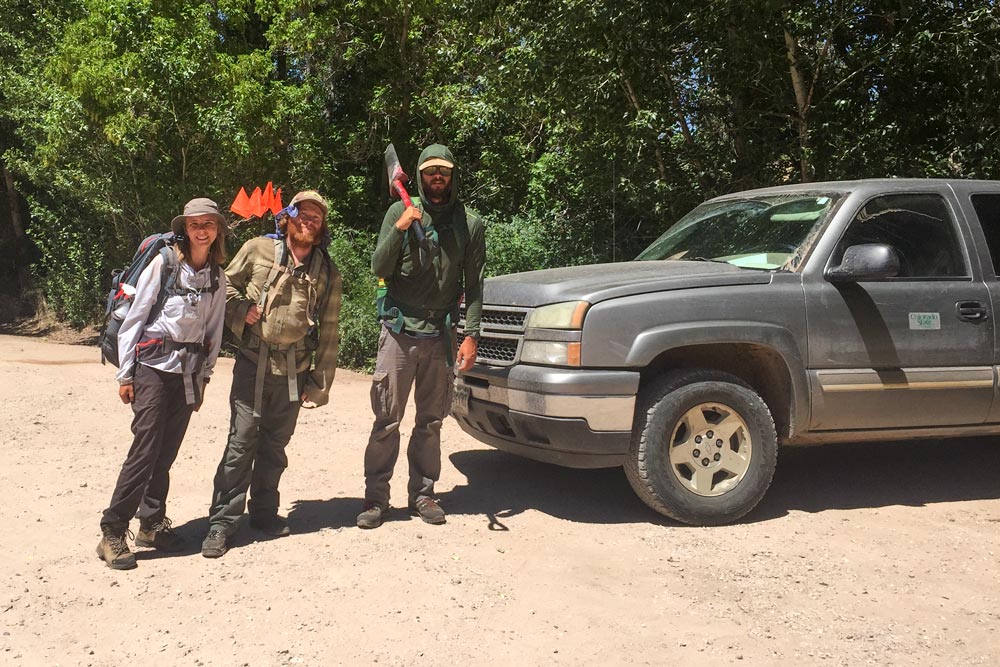
The ecological referee team was made up of CSU graduate student Jesse Wooten from the master of natural resource stewardship program; senior Miranda Flora, a natural resources management major; and Justin Lambert, a student at Front Range Community College. They attended a four-day intensive training in Oregon prior to heading out into the field this past summer. Wooten said this foundation built the camaraderie and consistency needed to implement the assessment.
“Having three voices and minds at work on each site gave us a good, overarching sense of the conditions,” Wooten said. “We could talk through our observations and be sure we would make accurate assessments.”
Flora, who had never been in Dinosaur National Monument before, became the plant identification specialist. She said the team put in extra planning and preparation to figure out how to access places largely unvisited within the monument’s boundaries.
“We were in areas that a lot of park staff hadn’t been to,” Flora said. “We were on our own much of the time, sometimes driving up to four hours to reach a site.”
While the work was time-intensive and remote, team members said they enjoyed many benefits living and working in the monument. They visited a historic fire lookout tower, rafted down the Green River, and saw open country few have observed.
Cross-disciplinary reality
Jablonski also recruited pedology professor Susan Melzer from the Soil and Crop Sciences department to carry out the project’s initial soil assessment work during the summer of 2018. From an educational perspective, Melzer said, she wanted to get students involved from the beginning. This inspired her to design an experimental one-credit course where students could apply their knowledge out in the field.
“I saw this as an opportunity to broaden their perspective and within the scope of the class take a project from start to finish,” she added. “It brought the real world into the classroom.”
Over the course of two short trips to Dinosaur National Monument, more than 20 undergraduate and graduate students from CSU and the University of Wyoming divided into groups and found all 45 sampling locations in the monument. They were accompanied by soil scientists and park staff who provided mentorship for digging soil pits and direction for collecting samples in archaeologically sensitive areas.
Students analyzed their data back on campus and presented findings to Spaak and Spencer. They also shared this data with Jablonski for inclusion in the greater Dinosaur National Monument rangeland assessment study.
The connections this single project has established between students, researchers, faculty and alumni show the collaborative nature of large-scale management initiatives. Individuals at all levels of stewardship have something to bring to this rangeland table.
“We’re not even under one college or university,” Melzer said. “This project is unique in the fact that it crosses so many disciplines as well as professional and academic levels. It truly represents the realities we face in management and research.”
The story isn’t finished. Melzer continued her experimental soils course in partnership with the University of Wyoming in Black Canyon of the Gunnison National Park this past summer, and she hopes to make it a permanent fixture in CSU’s course catalog. Jablonski will complete analysis of the rangeland assessment and add his own computer modeling expertise to simulate cattle behavior on the grazing allotments. Tim Covino of CSU’s Natural Resource Ecology Laboratory will evaluate the hydrologic assessments that will add the final piece to Dinosaur National Monument’s IIRH.
Looking back, Spaak said he sees how his CSU journey has come full circle. For younger stewards in rangeland and natural resources-related disciplines, he offers one piece of advice that helped him tap into all the connections and knowledge he brought with him since graduating.
“Get involved and talk with faculty and agency staff. Find the route you would like to take and do as many different things as you can while you are at CSU,” he said. “Find what you like to do on a daily basis. When it’s fun, it doesn’t feel too much like work.”
This project includes partnerships between the National Park Service, Colorado State University, University of Wyoming and the USDA Natural Resources Conservation Service.
